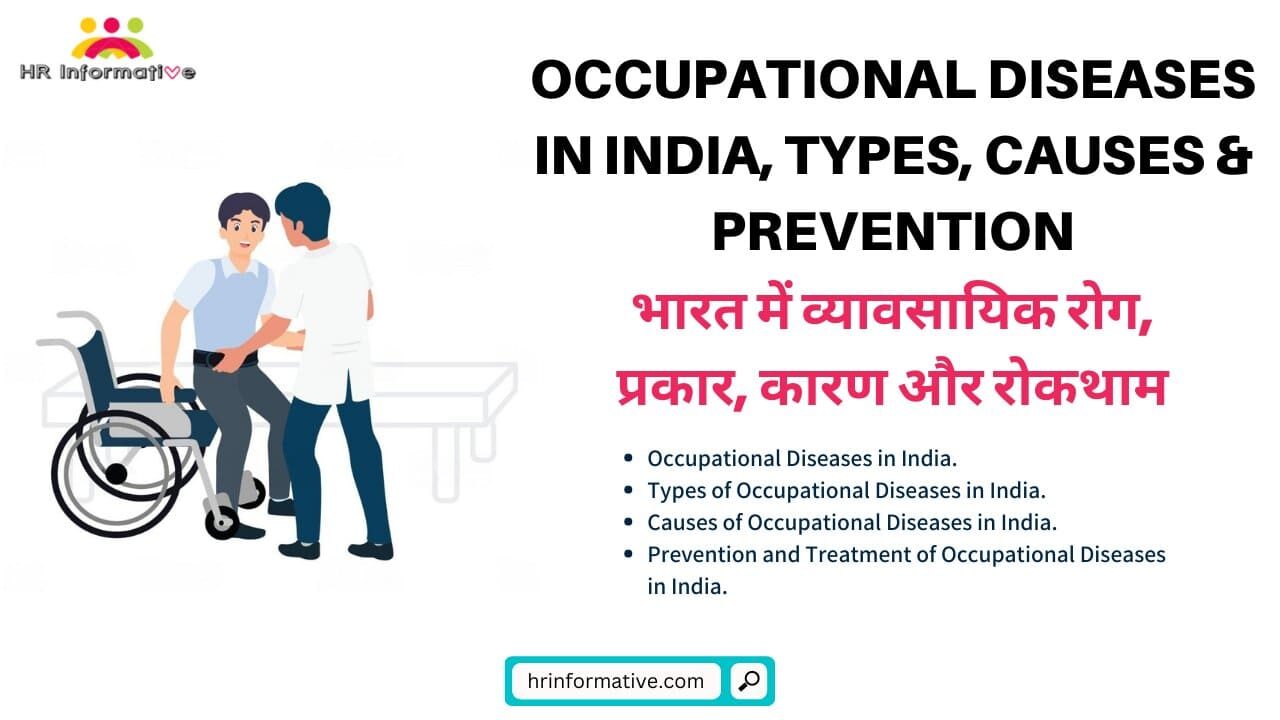Occupational diseases are illnesses that result from exposure to hazards in the workplace. These illnesses may be caused by physical, chemical, biological, or psychosocial factors, and can range from mild to severe. In India, occupational diseases are a significant public health concern, affecting millions of workers across various sectors. In this article, we will explore the state of occupational diseases in India, including the types of diseases, their causes, and the measures being taken to prevent and treat them.
Occupational Diseases in India
In India, occupational diseases have been a longstanding issue due to the lack of adequate safety measures and working conditions in various industries.
The concept of occupational health and safety in India dates back to the Factories Act of 1948, which aimed to provide basic safety measures to workers in factories. Since then, various laws and regulations have been enacted to address the issue of occupational diseases in India.
However, despite these efforts, many workers continue to be exposed to hazardous working conditions, including exposure to harmful chemicals, dust, noise, and other hazards. This has resulted in a high incidence of occupational diseases such as respiratory illnesses, skin diseases, hearing loss, musculoskeletal disorders, and mental health disorders among workers in various industries.
In recent years, there has been a growing awareness about the importance of occupational health and safety in India, and the government has taken steps to improve safety measures and working conditions for workers. Nevertheless, there is still much work to be done to address the issue of occupational diseases in India and protect workers’ health and safety.
Types of Occupational Diseases in India
There are several types of occupational diseases that affect workers in India. Some of the most common ones include:
Respiratory Diseases
Workers in industries such as mining, construction, and manufacturing are often exposed to airborne particles, fumes, and dust that can cause respiratory diseases. These diseases include asthma, chronic obstructive pulmonary disease (COPD), and silicosis.
Musculoskeletal Disorders
Workers who perform manual labor, such as lifting heavy objects, bending, and twisting, are at risk of developing musculoskeletal disorders. These disorders affect the muscles, bones, and joints, causing pain, stiffness, and mobility problems. Examples of musculoskeletal disorders include back pain, carpal tunnel syndrome, and tendonitis.
Skin Diseases
Workers who handle chemicals or are exposed to irritants and allergens can develop skin diseases such as dermatitis, eczema, and psoriasis.
Noise-Induced Hearing Loss
Workers who are exposed to high levels of noise, such as those in the construction and manufacturing industries, can develop hearing loss over time.
Causes of Occupational Diseases in India
Occupational diseases in India are caused by various factors, including:
Exposure to Hazardous Substances
Many workers in India are exposed to hazardous substances such as chemicals, dust, and fumes that can cause respiratory, skin, and other diseases.
Poor Working Conditions
Workers in India often work in poor conditions, including inadequate ventilation, poor lighting, and extreme temperatures, which can contribute to the development of occupational diseases.
Lack of Protective Equipment
Many workers in India do not have access to protective equipment such as respirators, gloves, and safety glasses, which can help to reduce exposure to hazardous substances.
Lack of Training and Awareness
Many workers in India are not aware of the risks associated with their jobs and may not receive adequate training on how to protect themselves.
Prevention and Treatment of Occupational Diseases in India
The prevention and treatment of occupational diseases in India are critical to protecting the health and well-being of workers. Some of the measures being taken to prevent and treat these diseases include:
Occupational Safety and Health (OSH) Standards
The Indian government has implemented OSH standards to protect workers from hazards in the workplace. These standards include regulations on the use of protective equipment, workplace hygiene, and safe work practices.
Health Surveillance
Employers are required to monitor the health of their workers to identify and prevent occupational diseases. Health surveillance includes regular medical examinations, screening tests, and monitoring of exposure to hazardous substances.
Education and Training
Workers need to be educated and trained on how to protect themselves from hazards in the workplace. This includes training on the proper use of protective equipment, safe work practices, and the risks associated with their jobs.
Treatment and Rehabilitation
Workers who develop occupational diseases need access to medical treatment and rehabilitation services. These services may include medication, therapy, and support groups to help workers manage their conditions.
Conclusion
Occupational diseases are a significant public health concern in India, affecting millions of workers across various sectors. These diseases are caused by exposure to hazardous substances, poor working conditions, and lack of protective equipment and training. To prevent and treat occupational diseases, measures such as OSH standards, health surveillance, education and training, and treatment and rehabilitation are being implemented in India. However, more needs to be done to raise awareness about the risks of occupational diseases and to ensure that workers have access to the necessary resources to protect their health.
In conclusion, occupational diseases are a serious issue in India, and it is essential that employers, government agencies, and workers themselves take proactive steps to prevent and treat these illnesses. By working together and implementing effective measures, we can help to ensure that workers in India can work in safe and healthy conditions and lead healthy and fulfilling lives.
Related Posts :



